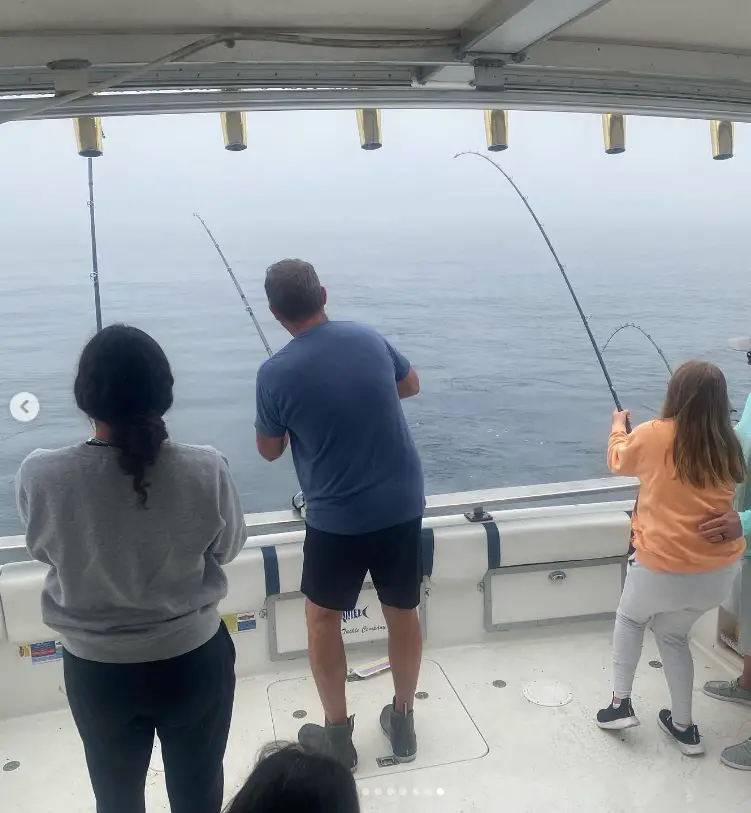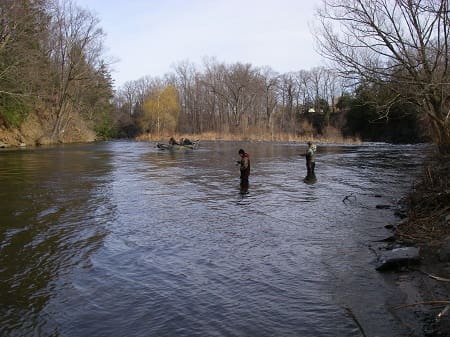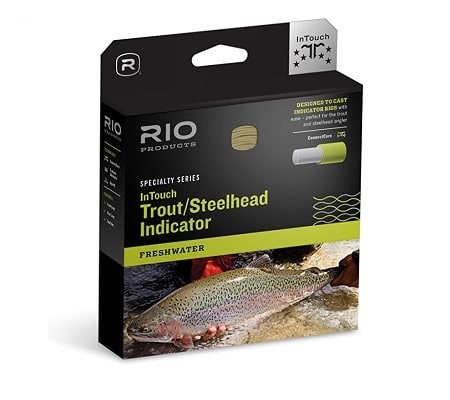Trolling For Steelhead: An In-Depth Guide to DIY Fishing

I’ve been a steelhead guide for over 20 years, and trolling for steelhead is one of the methods I use to catch steelhead, but there are things I do and things other charter captains do to put more fish in the boat.
By gaining knowledge about steelhead movement patterns, mastering trolling methods, and using the appropriate gear, you can significantly enhance your chances of success when trolling for steelhead.
In this comprehensive guide on trolling for steelhead, we will delve into the most effective lures for steelhead in open water, prime trolling locations, optimal speeds and depths, essential equipment, and the best times of the year for successful outings.
Why Choose Trolling for Steelhead?
Trolling entails dragging lures, trolling flies, or cutbaits behind a moving boat. Trolling offers several compelling advantages for steelhead fishing:
- Versatility: Trolling provides exceptional versatility, with five trolling methods which include downriggers, dipsy divers, planner boards, lead core and copper lines, and flat line trolling. All of these enable anglers to explore different depths, and cover a wide range of fishing areas.
- Maximum Coverage: Trolling allows you to cover a large expanse of water compared to other fishing techniques. Rather than remaining stationary and waiting for fish to come to you, trolling lets you actively search for steelhead.
- Multi-Line Fishing: One of the benefits of trolling is the ability to fish with multiple lines simultaneously. With multiple lines in the water, you can present a variety of lures or baits at different depths, enhancing your chances of attracting a strike. This strategy helps you determine the preferred bait, bait color, bait size, or a preferred presentation style for the steelhead on that particular day.
- Bait Variation: Trolling provides the freedom to experiment with different baits and lures. If one type of bait or lure is not attracting the steelhead, you can easily switch to another option without disrupting your fishing setup. This flexibility allows you to adapt to the changing preferences of the fish and increase your chances of success.
What You Need To Troll for Steelhead

Now that you understand the benefits of trolling for steelhead, let’s explore the steps involved in preparing for a successful trolling adventure:
Choosing the Right Equipment and Tackle
Trolling for steelhead requires specific gear, which includes rods, reels, and lines. Other gear, such as planner boards, Dipsy Divers, and downriggers, are all great tools.
Fishing Rods: Opt for trolling rods specifically designed for this angling technique. Trolling rods are typically longer, ranging from 9 to 12 feet, allowing you to spread your lines farther from the boat. Choose good trolling rods with varying action and power, such as medium-light, medium-heavy, and heavy medium-to-fast action, to accommodate different fishing conditions and steelhead species.

Reels: Select line counter trolling reels capable of handling the demanding nature of steelhead fishing. Trolling reels should feature a smooth drag system and ample line capacity. Reels sized 300 or larger are recommended for trolling. See Best Trolling Reels For Steelhead.
Fishing Line: Choose a high-quality fishing mainline suitable for trolling. We use monofilament, braided line, wire lines, and lead core lines, usually in the 20 to 40 pound range.

Leaders: Pair your main line with a leader line of monofilament or fluorocarbon in the 20 to 30-pound range. The ideal leader length is usually 36 to 40 inches and can be used for the cheater line or dropper line.
Lures and Bait: Experiment with a combination of cut-bait rigs and artificial lures to catch more steelhead.
For artificial lures, consider using a hoochie rig, spoons, plugs, crankbaits, and large steelhead spinners. Look for lures that emit vibrations and flashes to attract the attention of steelhead.
Downriggers: Downriggers are valuable tools for trolling, especially when targeting steelhead holding at greater depths. Check out the Best Downriggers For Salmon And Steelhead.
Divers, Flashers, Attractors: Special divers like dipsy divers can get your bait or lure into deeper waters without downriggers. Adding a bright-colored 8″ or 11″ flasher can attract steelhead to your lure.
Terminal Tackle: Ensure you use strong, sharp hooks on your rigs. You will need a barrel swivel or a snap swivel to attach your leader line.
Trolling Techniques and Strategies

Trolling for steelhead involves more than simply dragging your lines behind the boat. Understanding the right techniques and strategies will significantly enhance your chances of success. Here are some key factors to consider:
Trolling Speed For Steelhead
Maintaining the right speed when trolling for steelhead is crucial since certain steelhead species have a preference for the speed of their moving prey, and some lures work best at specific speeds.
Typically, the ideal speed for ocean fishing and trolling for steelhead in the Great Lakes is 2 to 3 miles per hour (mph).
Use a GPS or a speedometer specifically designed for trolling to accurately monitor your speed. Adjust your speed based on the fishing conditions, the behavior of the fish, and the type of lure or bait you’re using.
Downrigger Trolling Speed – 1.5 to 3.5 MPH
Dipsy Diver Trolling Speed – 2.5 to 3.0 MPH
Lead Core Line Trolling Speed – 1.0 to 2.5 MPH
Guide Tip: It’s common for steelhead to follow the lure or bait for an extended period. Experienced guides sometimes vary the speed by slowing down and then speeding up to trigger more steelhead to bite. Another option, instead of driving the boat in a straight line, create an “S” pattern to vary the speed of your lures.
Ensure that your lures and flashes are functioning correctly. Flashers should spin in wide circles, and lures should wobble, flutter, and vibrate.
To confirm that the lure is operating correctly, lower the rig just below the surface at the side of the boat while at the desired speed and observe it to ensure it’s running perfectly. A tight spin or darting action is not ideal. Adjust the speed as necessary.
Water Temperatures
During the summer months and at other times of the year, the steelhead will often be found in the water column that is at their desired water temperature.
Steelhead tend to run higher and in slightly warmer water than salmon do so they can be targeted using many methods.
Depth Control
The depth at which you present your bait or lure plays a pivotal role in catching steelhead. For this reason, downriggers are incredibly useful for controlling the precise depth of your steelhead rigs.
Locate the steelhead or baitfish on the fishfinder and lower the downrigger ball at the same level or 5 feet above the steelhead or bait. This often results in more fish than running your baits and lures below the steelhead.
Some downriggers also have temperature and depth sensors. If not, get one because they will help you catch fish. They are helpful in finding the steelhead’s desired water temperature range.
Adjust the depth based on factors such as water temperature, the presence of baitfish, and the known depth preferences of the steelhead species you’re targeting. If you don’t have downriggers, you can use Dipsy Divers or lead-core lines to achieve the desired depth.
The Spread: Line Spacing
When trolling with multiple lines, it’s crucial to maintain proper line spacing and spread your lines out strategically both horizontally and vertically in the water column. This prevents tangles and allows your lures or baits to cover more water.
A general rule of thumb is to space your lines at least 20 to 30 feet apart. Use planer boards and specialized trolling releases to spread out your lines horizontally. This technique is used by top guides to expand the coverage area and increase hookups.
Adjust the line spacing and spread based on the conditions such as waves, and only use the number of lines you can effectively manage, or that is permitted by law.
Pay Attention to Structure
Steelhead are often found in open water near schools of baitfish, but at times and under the right conditions, they can also be located near underwater structures such as drop-offs, reefs, and rocky outcrops.
Trolling along these structures increases your chances of encountering actively feeding steelhead.
Use a good fishfinder, GPS, or chart plotter to find and identify underwater structures so you can plan your trolling route accordingly. A good fish finder GPS combo is a must if you want to optimize your fishing success. See my article: 11 Best Fish Finders: Review And Buyers Guide
Vary Your Presentation
Experimentation is key when trolling for steelhead. Try different lure colors, sizes, and styles to determine what the fish are most responsive to on a particular day.
Take note of the water conditions, such as clarity and light penetration, and select lures that either stand out or mimic the natural prey of steelhead.
Adjust your presentation by varying the distance behind the boat, the trolling depth, and the action of the lure. Sometimes, a subtle change in presentation can trigger a strike from a hesitant steelhead.
Top Trolling Spots for Steelhead
There are many good spots to troll for steelhead:
- Pacific Northwest, United States: The rivers and coastal areas of the Pacific Northwest, particularly in Washington and Oregon, offer fantastic trolling opportunities for steelhead. Explore renowned spots like the Columbia River, Puget Sound, and the Strait of Juan de Fuca for thrilling steelhead action.
- British Columbia, Canada: British Columbia is famous for its pristine rivers, lakes, and coastal waters that teem with steelhead. Trolling enthusiasts flock to locations like the Fraser River, Queen Charlotte Islands, and Haida Gwaii for epic steelhead fishing experiences.
- Alaska, United States: Alaska is synonymous with steelhead fishing and boasts some of the most incredible trolling opportunities in the world. From the renowned Kenai River to the remote wilderness of Bristol Bay, Alaska, offers a vast playground for steelhead anglers.
- Great Lakes: Anglers have the opportunity to catch steelhead in all of the Great Lakes.
Research your desired location, consult local guides or fishing charters, and plan your trip accordingly. Each region has its own unique fishing regulations, so make sure to familiarize yourself with the rules and obtain the necessary permits or licenses.
When To Troll For Steelhead
There will be steelhead out in the open water year-round. Some steelhead will enter the rivers starting in early summer in some areas like Alaska, BC, and the lower Pacific West Coast, but there will still be winter-run steelhead out in the open water.
Despite trying to figure out when and where, most anglers will have the best success from May to October, and those who know when to fish far offshore and when to move in close to shore will have the most success.
Pro Tip: When fishing in very cold water, slow your speed down to catch more fish, and try a plug with a slow and wide wobble.
Trolling For Steelhead At River Mouths and Near Shore

When the steelhead move in close to shore or when staging off of river mouths, they can be higher in the water column. Anglers will often catch them flat-lining them with crankbaits and plugs, and some will also choose spinners and spoons.

Pay attention to the fish finder to find out what depth they are running and use the appropriate lines and gear to get down to their level.
Depending on how far up the river or the type of river, you may want to consider back trolling methods for steelhead.
Trolling for Steelhead On The Great Lakes
Did you know that the Great Lakes region of North America offers some of the best steelhead fishing in the world?
May through October is an excellent for open-water steelhead fishing on Lake Michigan. Lake Ontario is another hot spot for large Great Lakes steelhead. Lake Erie has great fishing out in open water from May to October.
Lake Huron, Georgian Bay, and Lake Superior all offer decent steelhead trolling opportunities.
Steelhead Trolling Conclusion and Q&A
If you have a question or comment on trolling for steelhead, let us know in the comments below.
Tight Lines
Graham
Sources:
- Steelhead preferred water temperatures – FishHawk
- e-regulations – Oregon
- Regulations New York






